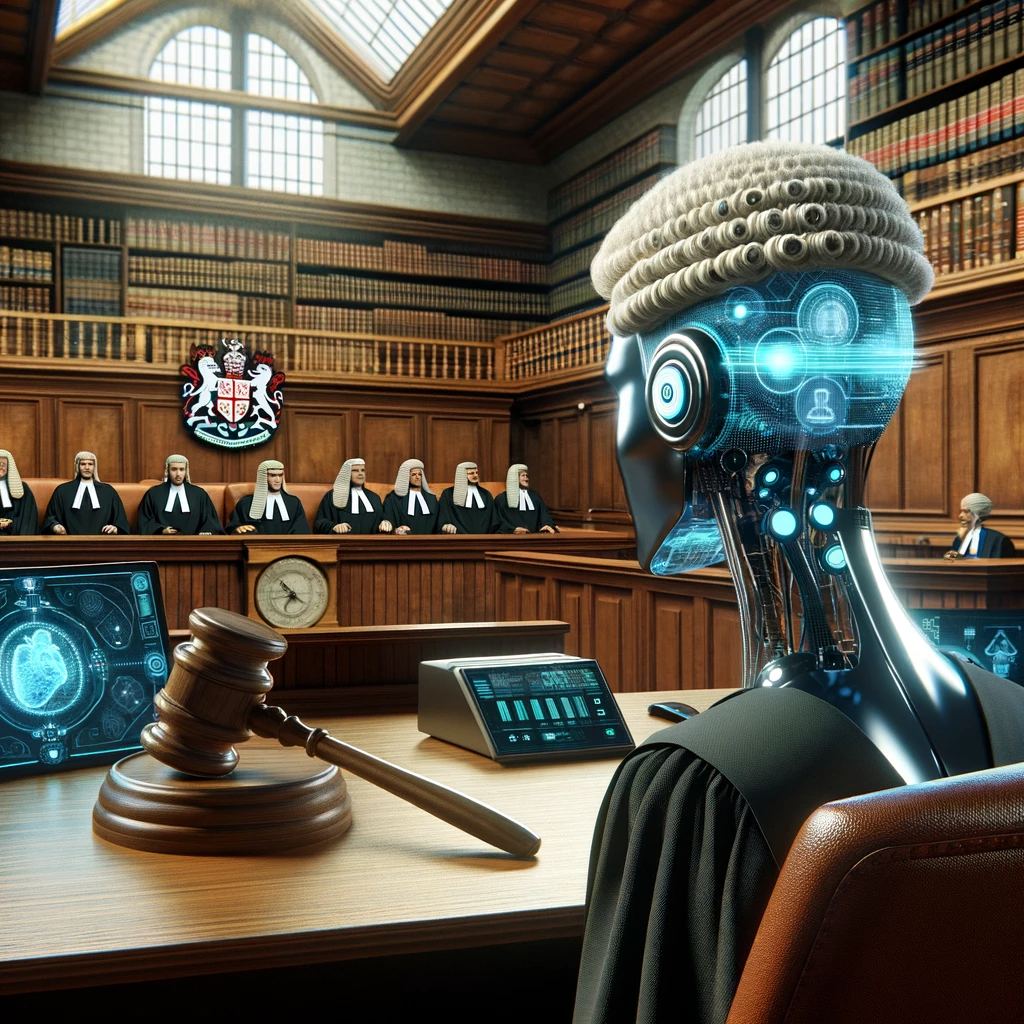England’s historic legal system, steeped in centuries-old traditions, is taking a measured step into the future by allowing judges to utilize artificial intelligence (AI) in crafting legal opinions. This landmark decision by the Courts and Tribunals Judiciary represents a significant development in a profession traditionally slow to embrace technological advancements.
Balancing tradition and innovation
The use of AI in the legal field has been a subject of debate, with some envisioning a future where AI could potentially replace lawyers or even play a role in decision-making. However, the recent guidance issued by the judiciary in England and Wales strikes a careful balance. While it permits the use of AI to assist in drafting legal opinions, it prohibits its use for research or legal analyses due to concerns that AI can generate fabricated, misleading, inaccurate, or biased information.
Master of the Rolls Geoffrey Vos, the second-highest ranking judge in England and Wales, emphasized the importance of responsible AI use among judges, urging them to safeguard public confidence and assume full personal responsibility for the content they produce.
A Global Perspective
This move places England and Wales at the forefront of courts addressing AI’s role in the legal system, although it is not the first jurisdiction to do so. The European Commission for the Efficiency of Justice of the Council of Europe issued an ethical charter on AI’s use in court systems five years ago, addressing key principles like accountability and risk mitigation. However, England and Wales’ guidance represents a comprehensive, English-language document tailored specifically for judges and their staff.
In contrast, the United States has yet to establish universal guidelines for AI use in the federal court system, with individual courts and judges setting their own rules. Legal experts suggest that the cautious approach taken by England and Wales may result in a slower integration of AI into judicial activities compared to other areas.
Addressing concerns and limitations
While the guidance signals acceptance of AI technology in the legal field, it does not amount to a complete embrace. Critics have noted certain shortcomings, including the absence of a mechanism for enforcing accountability and a lack of specific details on sanctions for non-compliance. The question of oversight remains unanswered.
One prominent cautionary note in the guidance revolves around chatbots, such as ChatGPT, which has gained notoriety for generating content that includes fictional legal cases. Judges in England and Wales are advised not to disclose any private or confidential information to public AI chatbots and to treat information input into these chatbots as public and accessible by all.
Harnessing AI as a supplementary tool
Despite these limitations, the guidance acknowledges AI’s potential utility for judges with extensive caseloads. Judges can use AI as a secondary tool, particularly for tasks like drafting background material or summarizing existing information. It can also aid in quickly locating familiar materials, although it should not be relied upon for unverifiable new information or in-depth analysis and reasoning.
Appeals Court Justice Colin Birss lauded the assistance provided by ChatGPT in drafting legal rulings, highlighting its ability to efficiently summarize legal concepts within a paragraph, thereby streamlining the decision-making process.
In a rapidly evolving technological landscape, the cautious embrace of AI in the legal profession is a significant step forward for England and Wales. As the legal community grapples with the potential benefits and risks associated with AI, this guidance sets a precedent that other jurisdictions around the world may consider. While questions about enforcement and accountability linger, the judiciary’s recognition of AI’s role in modern legal practice marks a pivotal moment in the intersection of tradition and innovation.
Land a High-Paying Web3 Job in 90 Days: The Ultimate Roadmap
